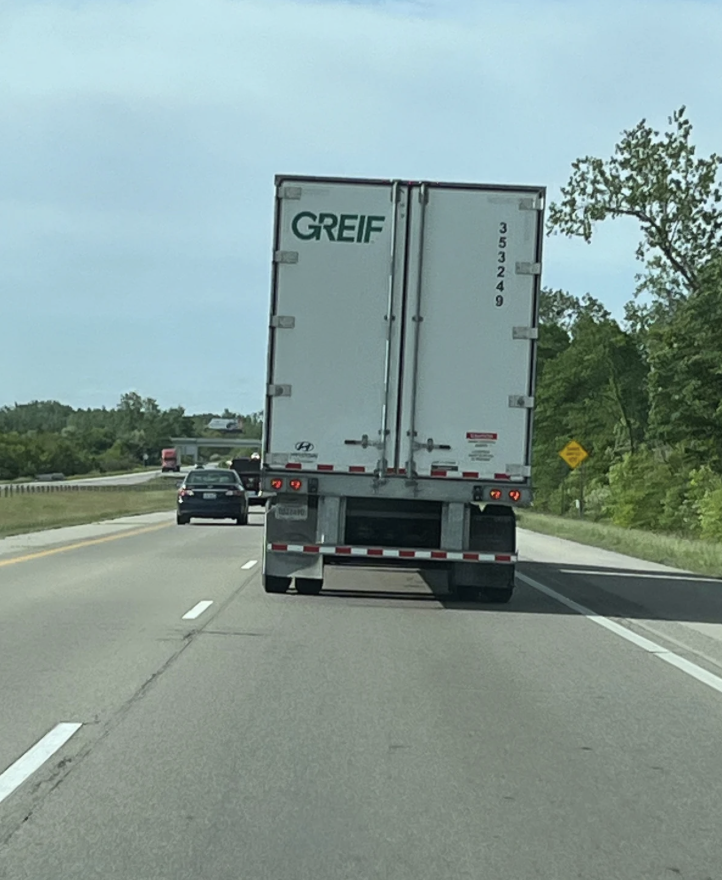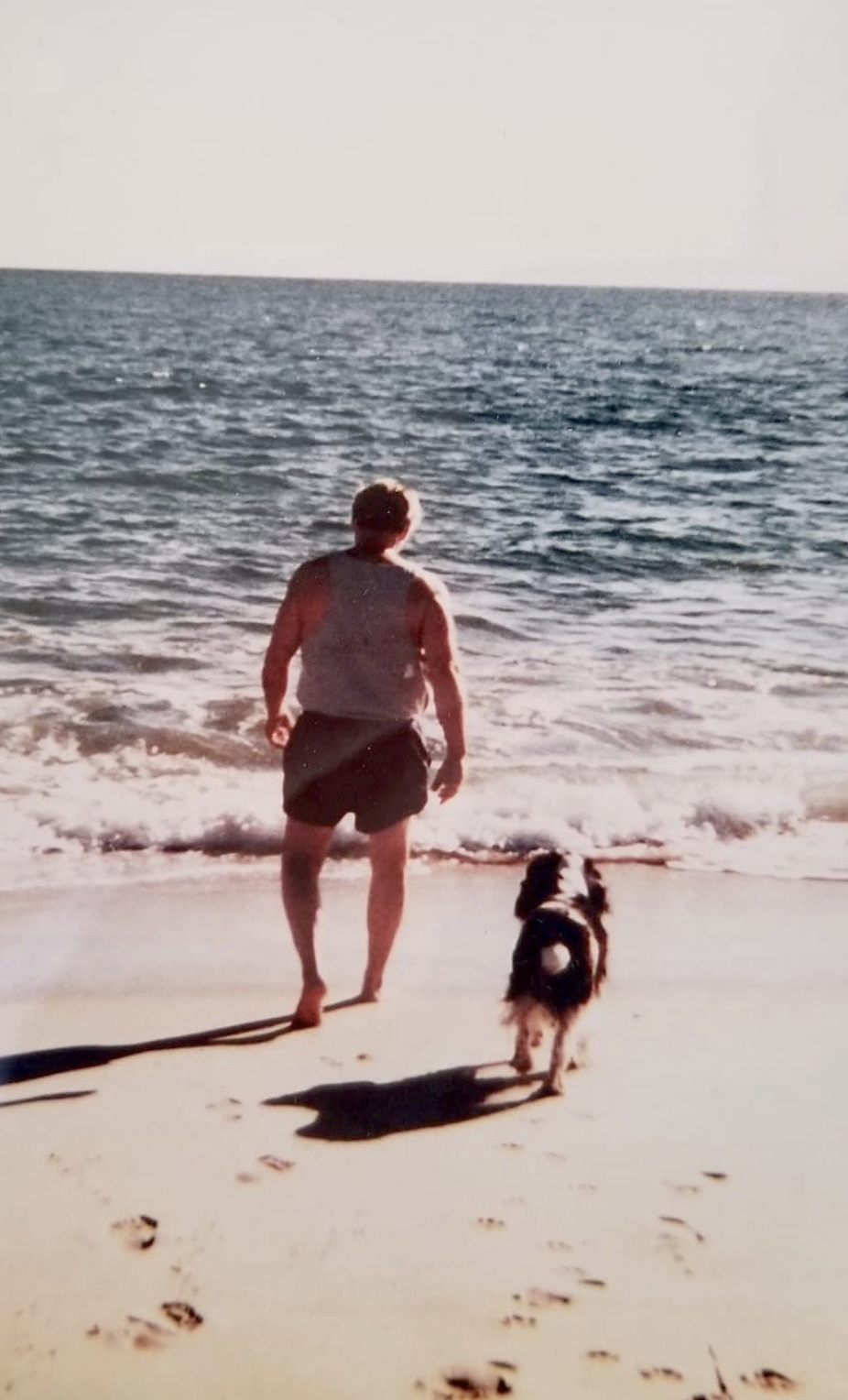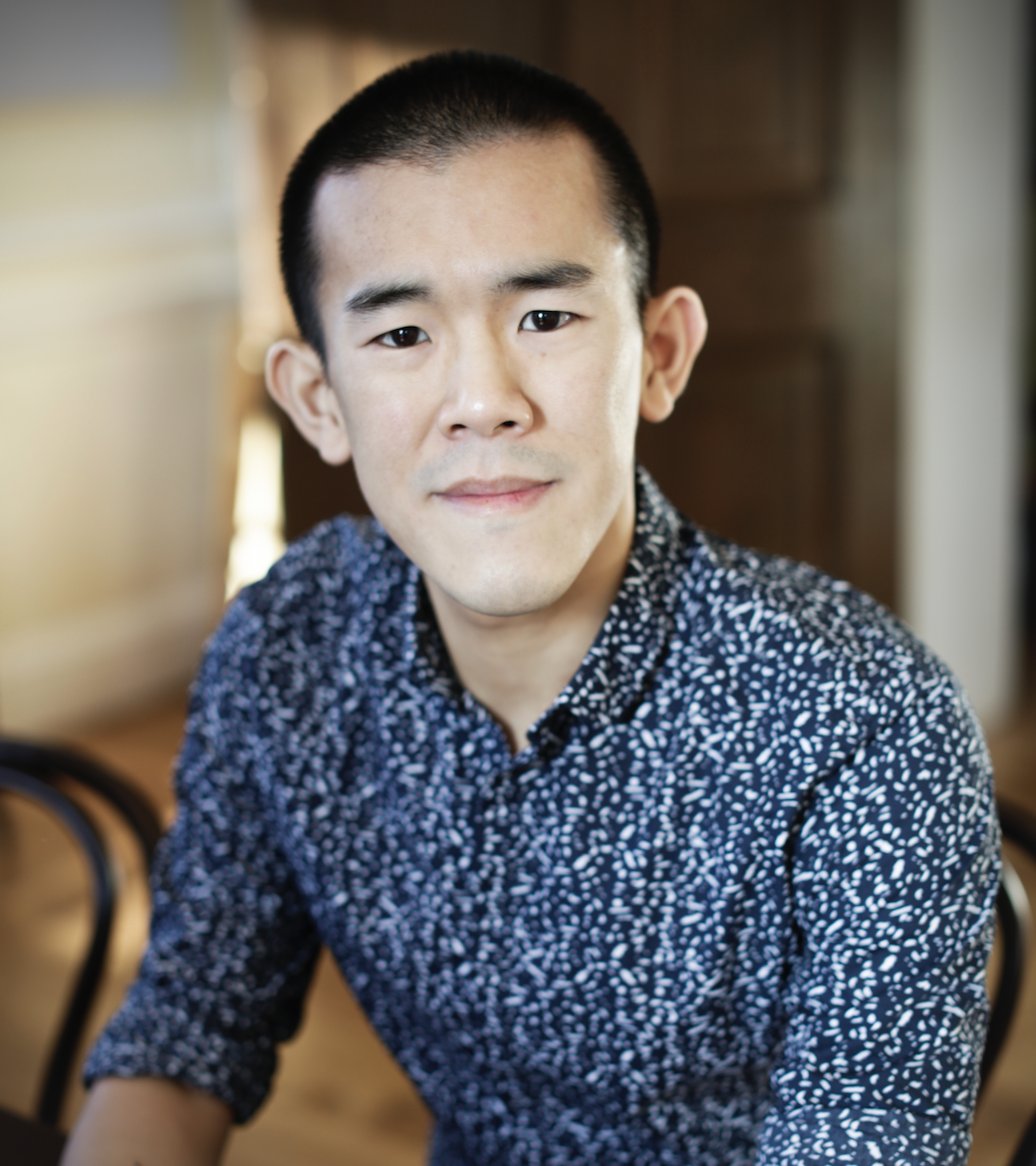When I was four years old, my father decided it was time for me to learn my address and phone number, so I’d be able to identify myself and find my way back if I ever got lost. He taught me the following ditty:
Judith Bernardien
Die heeft het wel gezien
Ze is een meid van zessen-klaar
En telt van een tot tien-
Judith Bernardine Hertog
Oosterpark twee-en-tachtig
negen-twee-negen-drie-drie-drie.
Judith Bernardeen
She is very keen
She’s an early morning gal
And counts from one till ten-
Judith Bernardine Hertog
Oosterpark eighty-two
Now I always knew who I was and where I belonged. I loved to be quizzed by my parents and rattle off the words of my song as fast as my tongue would let me. I’d recite the ditty as I skipped alongside my father on our Sunday-morning walks through Amsterdam, and I sang it during long car trips, along with the repertoire of battle songs that my father had also taught me. I have now lived more than half my life away from Oosterpark 82, and I doubt I’ll ever live in Amsterdam again, but no other address has imprinted itself on my memory. Every other address seems temporary.
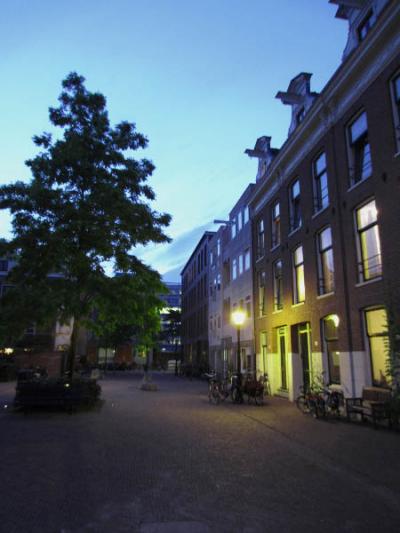
I have been on the move since I left Amsterdam at age 18, first living in Israel, where I met Gil, and then moving with him from country to country – China, the United States, Tibet, Taiwan – until we ended up here in Vermont.
I remember each of my former residences. I remember our student apartment in Nahalot, Jerusalem, and the comforting presence of the two neighborhood idiots, who spent every afternoon on the park bench right outside our window, their pale white bellies bulging out of their unzipped pants, talking about the weather and masturbating the hours away. I remember the Chinese students lining up for breakfast in the icy courtyard under our dorm room at the Chinese Language Institute in Tianjin, little steam clouds escaping from their mouths as they waited for the mess counter to open up. I remember my unheated hotel room in Lhasa, where I’d curl up under a blanket with a hot-water bottle to grade my students’ homework. I remember how our neighbors laid out their furniture to dry in the sun when Taipei had been hit by monsoon rains that flooded all the basements and first-floor apartments in our neighborhood.
My old telephone numbers are now disconnected and the houses where I used to live are occupied by others or have been demolished to make room for new buildings. But Oosterpark 82 is still standing.
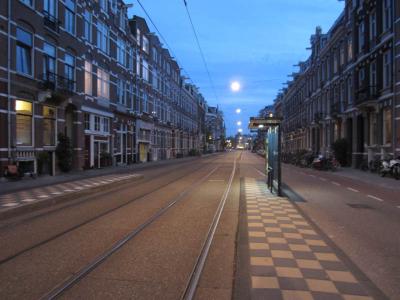
During my visits to Amsterdam I occasionally pass by it. As the tram rushes past, I strain to look up to the third floor. The building is a 19th-century mansion that once belonged to a Dutch painter and photographer, Willem Witsen. His widow stipulated in her testament that the residence should be divided into apartments that would be offered free of charge to deserving Dutch writers. According to my father, Madam Witsen specifically excluded painters from her will because she couldn’t stand the mess her husband and his friends made; and to keep an eye on things after her death, her ghost moved into the water-meter closet down in the hallway.
I was five months old when we moved into the third-floor apartment on Oosterpark 82. The house is the backdrop for almost all my childhood memories. During the long northern summer evenings, when I couldn’t sleep because the sun wouldn’t set until 10 pm, I’d peek from my bed out of the open window to spy into the neighbors’ houses, which were separated from ours by interior garden plots where birds sang in the evening sun and horny cats performed noisy mating rituals. I expected to discover great mysteries on the other side of the block, but all I ever observed were silhouettes of people moving from one room into another, families sitting down for a late dinner, or a person smoking a cigarette on a balcony.
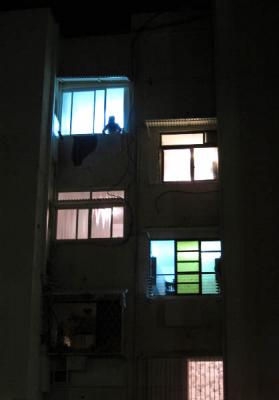
When my sisters were born, my mom moved me into the old painter’s studio in the attic, the only room up there with a window. To get to my room, I had to cross a large, dark attic space filled with antique junk: an old tin wash basin that a hundred years earlier had been used by the maids, old etching plates of Mr. Witsen, and a collection of large gilded frames stashed away in a corner. One day I crept between the frames with a flashlight and discovered that the very last frame gave entrance to a small hideout between the exterior and the interior wall. I thought I had found a secret hiding place—possibly the entrance to a parallel world, like Alice’s mirror, where time moves in reverse. I snatched some cushions from the living room couch, installed a turned up card-board box as a table, and turned the hide-out into my secret home, where I stored treasures and pretended to hide away from evil.
Our house in Vermont has no such secrets. Maybe it’s because I’m older now, or because the responsibilities of ownership – the constant vigilance to make sure this structure doesn’t collapse, flood, or burn down – doesn’t leave much room for mystery.
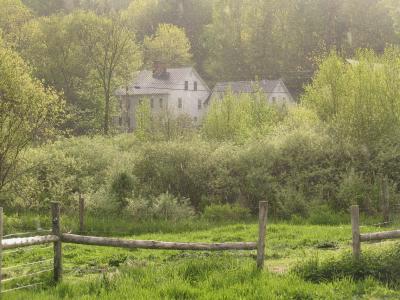
I do have a photocopy of an old map of our town. I like to study it, tracing my finger along roads that no longer exist and reading the names of farmers who lived here 140 years ago. From the map, I learned that a one-room school once stood on the site of our house. Now, whenever I look out the window, I imagine mid-19th-century schoolchildren walking down the muddy road with schoolbooks in their knapsacks.
The old map caught me in its spell. I wanted to find out more—about Mr.Tolman, who lived next to the schoolhouse back in 1869; about Mr. Hatch, the gentleman-farmer whose mansion down the road still proudly proclaims in restored gold lettering that it was built in 1785, although it’s now the summer house of rich Texans. And I wanted to know the people who lived on this plot of land before me.
When I asked the town clerk if she knew anything about the history of our land, she let me into the vault where the town records are kept: a small windowless space filled with archival bookcases containing two-hundred years of deeds recorded in thick, leather-bound books. Starting with our own deed, I wormed my way back through history from sale to sale. I learned that Susan and Ronald Lub bought Goodrich 51 in 1993 from Candy and Don Harlow. Susan and Ronald divorced in 2005, after which Susan sold the house to us. The Harlows bought the property in 1980 from Russel Hutchins, who had bought it in 1962 from Magdolna and Aurel de Galateo, who had bought it in 1949 from Joseph Pratt. But when I tried to find out who had had the house before Joseph Pratt, the town clerk came in to tell me she was closing up town hall. I abandoned my research, but the names I found didn’t leave me alone. I wondered if Magdolna and Aurel had been foreigners, like me, and if it had been the war that had displaced them and brought them to the United States. I noticed that Russel Hutchins didn’t have another person on the deed and wondered if he was lonely out here by himself in the woods.
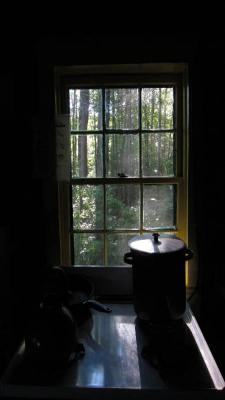
Years ago, when we were graduate students in Indiana, I would spend my free days driving on country back roads with my camera in my lap. I would come back with pictures of trailers and farm houses and of people mowing their lawn or peeking from behind screen doors. I would report to Gil on conversations I had with strangers. An old farmer boasted of the exotic places he had visited as a marine during the Second World War. A middle-aged man who lived in a run-down trailer on a dirt road introduced me to his young Filipina wife, whom he said he had met on a missionary trip. I thought that if I tried out all the back roads and investigated every old farm and trailer, one of them would eventually lead me to a loophole in time.
Last year, I volunteered for the historical society of our neighboring town, hoping again to break into the past. When I saw the newspaper ad calling for interviewers for an oral history project, I was convinced it was directed to me personally. The orientation meeting was in the old elementary school, a sturdy brick building with the smell of antique chalk dust emanating from the cracks in between the wooden floor boards.
I was the only non-local person attending. The historical society was headed by Patty, a dowdy woman in her sixties, who seemed to advertise with her blank frown that she expected nothing but disappointment from her fellow humans. The other volunteers were Ron, a spiffy, retired gentleman, and Claire, a middle-aged woman who told me she felt nervous because her daughter, a high-school senior, had just left for a volunteering project in Nepal.
When we each had to introduce ourselves and clarify what part of Hartford our family was from, I started feeling ill at ease. Patty called us to attention and proposed that we try to come up with a strategic plan for the interviews. She suggested that we first focus on the population of sixty to eighty year-olds. She then poised her pen to write down the names of potential subjects:
“How about Sandy, who runs the Polka Dot restaurant?” Claire suggested.
“But she’s too busy now. You know, with that fire next door, when the video store burned down,” Patty said.
“How about Pete?”
“Which Pete? Sue’s Pete or Hank’s brother?”
“Sue’s.”
“He hasn’t been himself since Sue died. Has been keeping to himself.”
“And how about Doug Blood?”
“Didn’t Doug move to Florida?”
“No, that’s Charlie.”
I was given the names of three people, but when I called and tried to explain what the project was about, they each said they didn’t have time and hung up on me. They must not have trusted my foreign accent. I didn’t want to disappoint Patty, so I called Ron to ask if I could interview him. He showed up dressed in black pants, cowboy boots, and a turquoise-studded belt buckle. Maybe he had dressed up especially for me. Unaware that the tape recorder was already running, he commented on feeling lucky to be interviewed by “a pretty young lady” and with a wink said he regretted he wasn’t a bit younger himself.
Patty gave me an audio copy of the interview. When I listen to it, Ron’s unhurried, nasal voice transports me to early-20th-century Vermont. He talks about his father, an orphan from Montpelier, who had taught himself to tap-dance and play the fiddle, and about his mother, who worked as a waitress in a bar where his father performed a vaudeville act. They married and opened their own restaurant, which grew into a business empire that included a bar, a hotel and a movie theatre. Ron lists the names of his high-school buddies and reminisces about the convertible his parents gave him for his sixteenth birthday, in which he took his dates to drive-in movies. Every once in a while my own voice chimes in to disturb Ron’s recollections with questions such as:
“So what did you teenagers do when you had a date? Did you make out?” To which Ron evasively replies that he was a good kid and only had good clean fun.
“Were there any Jews in town?” I hear myself ask, imagining some distant cousin of my father who could have ended up in Vermont. The tape plays Ron’s embarrassed silence and then his apology that he doesn’t remember any Jews.
How inappropriate for my voice to end up in the audio archive of the Hartford Historical society, forcing myself into a story that’s not mine.
Part 2 of this essay will appear at The Common next week on 4/16.
Judith Hertog lives in Vermont, where she works as a freelance journalist and teaches writing at a state prison.
